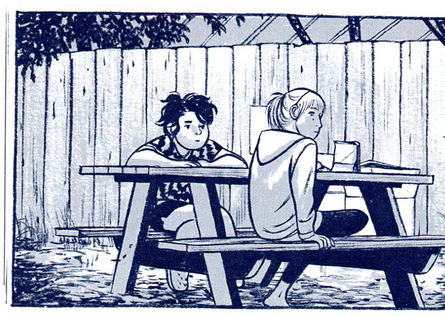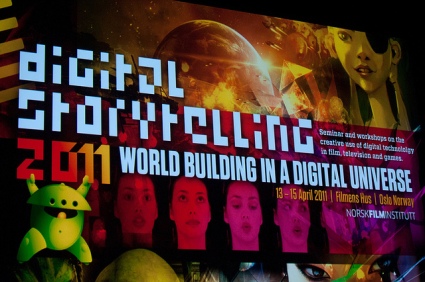Well, we’ve reached the end of the line. The end of the rope, more like it. The bell does indeed toll for me, and I figure there isn’t much of a better way to go than to bring it full circle, and evaluate the (sizable) list of graphic novels I’ve chewed through this semester and semesters prior. I wouldn’t call myself an expert on graphic novels by any means, more of an enthusiast. Thanks to Scott McCloud, I know how to analyze them a bit better, and I know a bit more about the components that make them up. Ms. Fish has expressed an interest in writing for graphic novels – I wonder how one breaks into that. Maybe that’ll be my next pursuit of knowledge.
Regardless, I figured after hours of reading, I would go back through the list with my newfound knowledge. Here are my (personal) favorite top 5 graphic novels of all time.
#5: Watchmen by Alan Moore
I struggled with whether or not to throw Watchmen on this list. It’s by far the longest and one of the most difficult graphic novels I’ve read, regardless of having capes in it. It’s some seriously dark, heavy stuff. Watchmen tackles what happens when superhero teams fall out, the United States government bans vigilantism, and is essentially a “whodunnit?” murder mystery between superheroes. Couple that with the constantly recurring theme of “who watches the Watchmen?,” in other words, who polices superheroes, and you’ve got quite a lot going on in this one.
Part of the reason I debated throwing it on the list was sheer length: this one is long from beginning to end. This is by no means a 20 minute breeze. It’s tough to press through. The cast of characters is diverse and infinitely messed up, each “super”hero is a human at the core with problems and dark personal places they are trying to run from. Another reason I considered axing this one from the list is simply because the author, Alan Moore, has said some pretty outlandish and foolish things in recent years about the recent surge of comic books and their popularity. Though, I felt it would be unfair to punish the work for the creator’s flaws, so it made it. This is not for the feint of heart.
#4: In Real Life by Cory Doctorow and Jen Wang
To be honest, I didn’t expect In Real Life to make the list. It had a beautiful and charming art style, but was a relatively quick read. However, the more I chewed on it, the more I grew to appreciate it. In Real Life is about a lot of things: teenage nerdiness, video games, other cultures, economics, social plight, and friendship. There isn’t an overly sexy or overly homely protagonist: she’s a normal, everyday girl who happens to be into some dorky stuff.
In Real Life landed on my list because it portrays real gaming by real people, and doesn’t propagate the “gamer girl” stereotype. Cory Doctorow and Jen Wang have done their fair share of gaming, or at the very least, research on it. There aren’t any complete jumps in logic to make the “video game” segments of the novel work. TV shows and movies are infamous for absolutely butchering any attempts to include video games in a storyline. They’re often unrealistic in terms of actual games, and I can’t stand when some actor sits with a 360 controller and pounds on the buttons like they’re playing a game.
Being a gamer with an MMO gaming girlfriend, I appreciated these details. Short as it may be, In Real Life makes my list.
#3: Maus: A Survivor’s Tale by Art Spiegelman
If there is a literary canon for graphic novels, Spiegelman’s Maus is definitely at the top of the list. The book is both about Art’s as well as his father’s tale: his father retells how he became part of and survived the holocaust, and Art is depicted grappling with the seriousness of the subject and frequently butting heads with his father. Their relationship is somewhat strained, but still loving.
Maus’s art style is simplistic, but highly effective. Different ethnicities are depicted as different animals: Jews are mice, Nazis are cats, the Polish are pigs, etc. etc. The animal characters allow Spiegelman to play with symbolism he wouldn’t have access to otherwise: there are cats wearing mouse masks and things of that nature all over the novel. Obviously, the subject matter is an extremely heavy one, couple that with the tale being true, and you have a must-read for anyone looking to break into graphic novels. Think it’s all superheroes and capes? Think again.
#2: This One Summer by Mariko and Jillian Tamaki
This One Summer is a novel I was introduced to during this semester, and of the new ones I’ve read, it is most definitely my favorite. It’s a coming-of-age tale between two teenage girls at their own little summer retreat, but it’s so much more than the quintessential “both characters learn a lesson and have a happy ending.” It deals with some pretty heavy themes: miscarriage, teen pregnancy, friendship, maturity, societal pressure, and awkward first love. It has its feel good moments, but ultimately, it’s about relationships between people as you age and mature. Friends, parents, etc. People grow apart. They come together, Adolescents discover things about themselves that they aren’t sure how to feel about.
The thing that really sold This One Summer for me besides the unique story, was the phenomenal artwork. This very well might be my favorite artwork in a graphic novel, bar none. The whole thing feels very dreamy, memory-esque, but never bleak or dark. The art style is highly detailed, yet flows effortlessly into simplicity when the moments call for it. The dark color used is a shade of blue, rather than black, avoiding the noir-like flashback feeling. I understand it also made Dr. Elisabeth Ellington’s list of the top books in 2014. I see why.
#1: The Dark Knight Returns by Frank Millar, Klaus Johnson, and Lynn Varley

This isn’t your mom and dad’s Batman with Adam West in it. No, no, no. This is a much darker, and a much different take than one we’ve seen in television or movies before. The Dark Knight Returns follows Bruce Wayne 8 years after having given up being Batman. Gotham is more run-down than ever, dominated by gangs and half-witted politicians, with news anchors of FOX News caliber constantly spewing nonsense about whether it’s Batman’s fault crime exists in the first place. When Bruce reaches a breaking point, he’s back in the game, but there’s a problem: he’s old.
He’s old, and his body only has so much left to give to this kind of work. Robin is long gone, and Batman must work his way back into favor with the people. Batman is more brutal than ever in this one, fighting to survive rather than just to dish out justice. He’s fighting a passive public, incompetent police force / politicians, and most of all: his own doubts. Things get even more jumbled up when a teenage girl in a Robin costume saves him from certain death. Batman here isn’t just about beating the bad guys: it’s a social commentary from the 80’s. The president is a grinning fool who sees only his own agenda to forward, the media is filled with fluff and pointless debates, the public either blame Batman for everything or depend completely on him for protection, there is no winner in this one. This is all before “gritty superhero reboots” were all the rage. This one pushed the Bat’s envelope to somewhere it had never been before.
In case you’re wondering, a few familiar faces do show up. In particular, one with a ridiculous grin, and another with a red cape flowing from the back…
___________________________________________
Well folks, that does it for me. As I said, this is my list of personal favorites. Pick and choose as you see fit. I would recommend any of these as a read in a half second. I think my list really reflects the diversity that can be found in graphic novels: we’re not living in a world of solely capes and superheroes. There are graphic novels on nearly every subject under the sun. You’ve just gotta look for them. We may have reached the end of the road, but the journey isn’t over for me.
Catch you all on the flip side.
Amata







